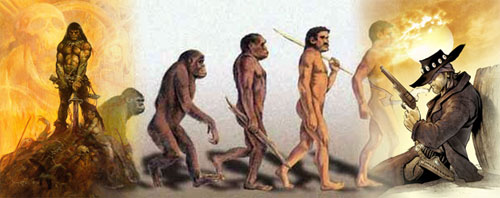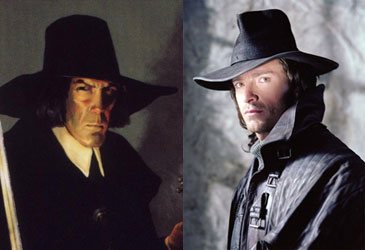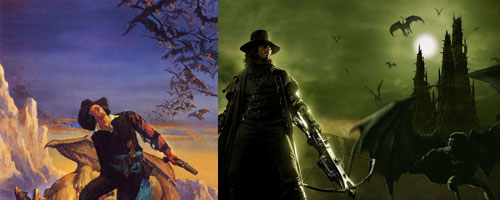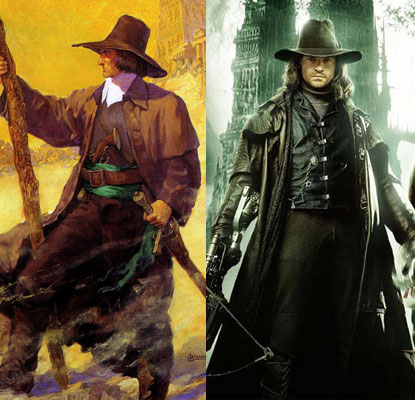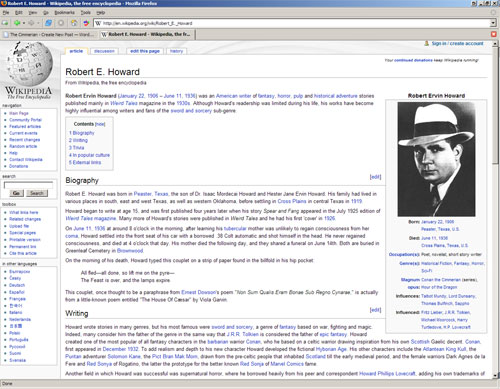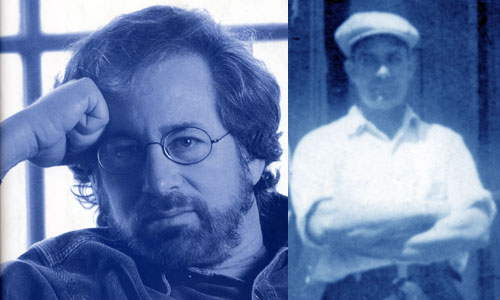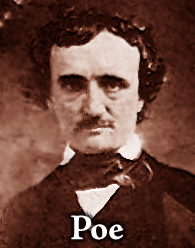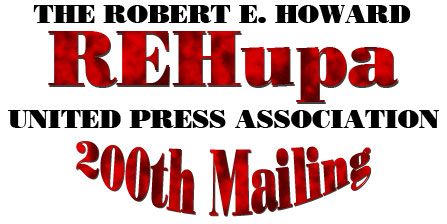
In a centennial year filled with milestones and anniversaries of all kinds, yet another is upon us. In 1972 teenager Tim Marion started REHupa, the Robert E. Howard United Press Association. This August the a.p.a. will release its two hundredth mailing. That’s a lot of talk about Robert E. Howard archived between covers.
Official Editor Bill “Indy” Cavalier has been cracking his bullwhip and urging all members to make stellar contributions to the August mailing. From the rumblings I’ve heard, it’s looking to be a whopper. I’ll be interested to see if every member will come through with a ‘zine of some kind, a feat that’s been hard to accomplish for past anniversaries.
REHupa has been in a strange period of flux for the last few years. Any three-decade history contains ups and downs, but when I joined in December of 1999 the Internet had boosted the a.p.a.’s ranks to a full roster of thirty members. In addition, advances in publishing software and printers allowed members to create bigger ‘zines than ever before. During the first few years of the new millennium, the a.p.a. regularly hit 300+ pages per mailing, a staggering figure, led by the Big Three ‘ziners of the era — Rick McCollum (who had been in the a.p.a. more or less since the ’70s, and who often hand-wrote and illustrated ‘zines topping one hundred pages) with his Oh! Acheron, Steve Tompkins with Expecting the Barbarians, and myself with Steel Springs & Whalebone!. Between the three of us, we would often make up half the mailing or more. With many other members frequently hitting the twenty-page mark during that time, the a.p.a. was as exciting as it has ever been, filled to the gills with Howard sercon (a.p.a.-talk for “serious content,” i.e., on-topic REH discussion).
But every golden era must eventually come to an end, something Howard well knew. Rick bowed out of the a.p.a., bedeviled by a series of “real life” problems. Both Steve and I saw our page counts plummet as our energies gradually drifted into other Howardian endeavors. In some ways, this metamorphosis was a good thing — The Cimmerian wouldn’t exist sans my decision to stop producing mega-‘zines, nor would this blog — but in another sense it was a drag to see REHupa flying ever lower over the treetops. In the last year or two, our thirty-member roster has sometimes struggled to squeak out a hundred pages between us.
All things considered, the decline of REHupa hasn’t meant a decline of interest in Howard, but rather a healthy redeployment of energies for the new information age we find ourselves in. There was a time not so long ago when REHupa was an essential way station for Howard fans, the only place where an obsessed aficionado could keep up with new revelations, essays, and products. Old mailings were often a bazaar of the bizarre, chock full of want lists, advertisements for small press items, and announcements of new books. Members came to the a.p.a. via little blurbs in The Last Celt, the Lancer/Ace reprints, The Dark Barbarian, and the Marvel comics. To many it was like finding an oasis in the desert — one far more hospitable than Hyboria’s Xuthal. Back in the day, REHupa wasn’t just appreciated but needed. It kept a core interest in Howard’s career intact through times when no one else gave a damn.
Nowadays, REHupa increasingly feels more like a bi-monthly family reunion, or perhaps a private club with wood-paneled walls and aromatic cigars and comfortable chairs. A place to relax and talk Howard, enjoying the company of friends, but in the end a luxury, not a necessity. The necessary part of REHupa has gone public via an assortment of books, magazines, art projects, and websites. Communication between fans now happens instantaneously via e-mail, and need not wait for a bi-monthly mailing or hastily scrawled letters. There’s an Information Superhighway out there now, and more of us are using it exclusively — to the detriment of the mom and pop a.p.a. located downtown.
This transition from paper to pixels wasn’t easy, it’s taken place over a period of at least five years, leaving many bodies and battles lying in its wake. The REH-e-APA website was an early attempt to create an online Howard a.p.a., spearheaded by REHupan and former Dark Man editor Frank Coffman. For several years, REHupans had been debating among ourselves whether to morph the a.p.a. into an online format, but always the majority (myself included) ended up coming down on the side of conservative preservation of the a.p.a.’s status quo. Why argue with thirty years of success? Why potentially destroy a good thing?
I was never a fan of REH-e-APA, because I saw it not as improving Howard studies but cannibalizing it. It created a Darwinian competition for a limited number of people and essays without growing the field at all. When you have an a.p.a. and a journal gobbling up content and starved for more, the last thing you want is yet another venue fighting over the exact same turf. A fair number of people joined REH-e-APA, eager to take advantage of the web, and for awhile it didn’t lack for contributions. But the cost was dear. REHupa began its page count slide as it lost material to REH-e-APA, and The Dark Man entered its Dark Age of years between issues, with the excuse being that no one was submitting content — the very kind of content that was being siphoned away by REH-e-APA. That Frank was the head of both REH-e-APA and The Dark Man, in effect using one of his endeavors to kill the other, was strange in the extreme — taking two semi-thriving concerns and turning them into three anemic ones is not my idea of progress.
Meanwhile, an example of a web idea that filled a need and maximized use of existing technology, that grew the field instead of cannibalizing it, was HowardWorks. It presented very useful data in a full-color, searchable format that no conventionally published document could match. Rather than suck the life out of other concerns, it made it easier for the writers at those places to complete their essays. It supplemented and aided the creation of other venues rather than sapping them of strength. And in doing all of this, it won the Cimmerian Award for Best Website two years running.
At first glance, it might seem that The Cimmerian is a cannibalizing endeavor akin to REH-e-APA, one that has sapped strength from other publications using the mercenary tactic of dangling money in front of writers. But such a viewpoint misses a large part of the realignment of the field that has resulted from The Cimmerian‘s debut in 2004. Increasingly, TC is powered not by old hands but by new guys who nobody had heard of a few years ago, producing essays and articles that never would have been attempted without TC sitting out there as an appealing paying market. These people don’t stay locked into TC, they drift off into other arenas and fill their pages, too. Unlike REH-e-APA, Howard Studies has palpably grown as a result of TC. All of the other stalwarts are still out there: REHupa, The Dark Man, REH:Two-Gun Raconteur, The Howard Review, etc. Each is chugging along at about the same pace they were before TC started printing large amounts of material.
So, if they are collectively printing about the same amount, and TC is now printing hundreds of additional pages, then where is all of this extra material coming from? From the theory, proven many times throughout history, that a rising tide lifts all boats. Just as on a much larger scale a company like Microsoft spawns thousands of smaller companies eager to provide products for Windows, so the steady, paying presence of a mag like TC serves to grow our field. You don’t think that Cimmerian Award winners are spurred to greater heights of effort for having won an award? Or that essayists have produced essays solely because of the knowledge that they’ll get paid for it? Or that other magazines have redoubled their production in an effort to keep up with the Joneses? Or that readers being hit with a new TC every other month are more likely to remain in the Howardian loop, buying other products when they appear and making decisions to attend events like Howard Days? If you don’t think the presence of a self-perpetuating growth engine in the field is a big deal, you’re not a good student of human nature or of history. Momentum is contagious, and success breeds success.
But that leaves the matter of REHupa, which has seen its pagecount drop over the past few years. Where does this Internet and publishing realignment leave that organization?
I read an article a few months back with parallels to this situation. It concerned the very last telegram sent by Western Union. At long last, after decades of winding down, telegrams finally were being phased out of existence — a bittersweet occasion, yet one that also betokened amazing achievement. After all, the lack of telegrams doesn’t mean that communication has lessened, but that it’s far more advanced and successful than before. The key phrase is at the end of the article:
Samuel Morse, inventor of the Morse Code, sent the first telegram from Washington to Baltimore on May 26, 1844, to his partner Alfred Vail to usher in the telegram era that displaced the Pony Express. It read “WHAT HATH GOD WROUGHT?”
“If he only knew,” Chayet said of the myriad of choices today, which includes text message on cell phones, the Internet and virtually free long-distance calling rates.
“It definitely was an anachronism,” Noel said. “It’s amazing it survived this long.”
It’s amazing it survived this long.
My guess is that REHupa will quietly hum along for awhile longer, growing more irrelevant in practical terms with each passing year, without quite losing its charm. Eventually, the last of the old-timers will die off or give up on it. When that happens, my generation will give it a quiet burial and move on, having long ago built the next giant step forward, an online/self-publishing arena. It’s an environment destined to accomplish all the goals REHupa was built for and more, a world full of blogs and databases and e-texts, all hyperlinked and podcasted and printed-on-demand. It’s a world that the a.p.a.’s inaugural members in 1972, slaving and cursing over their ditto/mimeo/hectograph machines could only have dreamed up as science fiction. REHupa will be gone. The vast majority of its decades of research, scholarship, camaraderie, and accomplishment will be looted for gems, leaving a mountain of detritus as a footnote to an era, and to a vanished generation of fans.
But the spirit of REHupa, and the shockwaves generated from its existence, will be alive and well. Projects unnumbered will continue to benefit from its pioneering efforts. And — who knows? — maybe some enterprising soul will take on the monumental task of archiving its tens of thousands of pages, allowing them to be pored over by men unborn in 1972 (or 2006 for that matter), men who will wonder what people like Bill Cavalier, Rusty Burke, Glenn Lord, and Don Herron were really like. (I, of course, will be old yet hale, hearty, and worshiped by legions of cultist fans. Kind of like Jubal Harshaw in Heinlein’s Stranger in a Strange Land, but with better chicks.)
To those of us who appreciate history, that silly acronym (Cimmerian readers know we pronounce it “Ray-HOOP-ah”) will forever hold a special place in our hearts, reminding us of a time when we were young and fought the good fight for Howard the hard way. One mailing at a time.
Two hundred mailings. Wow.



